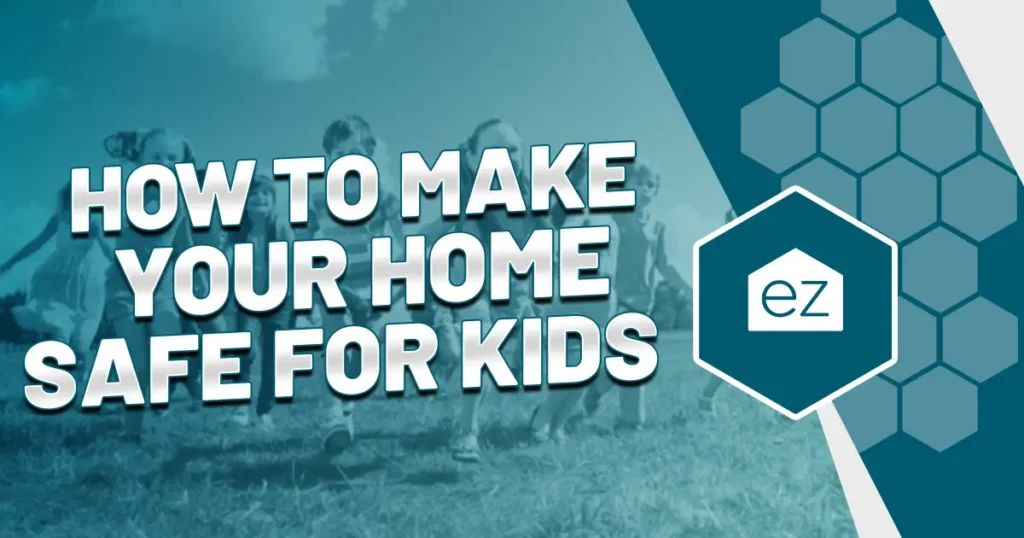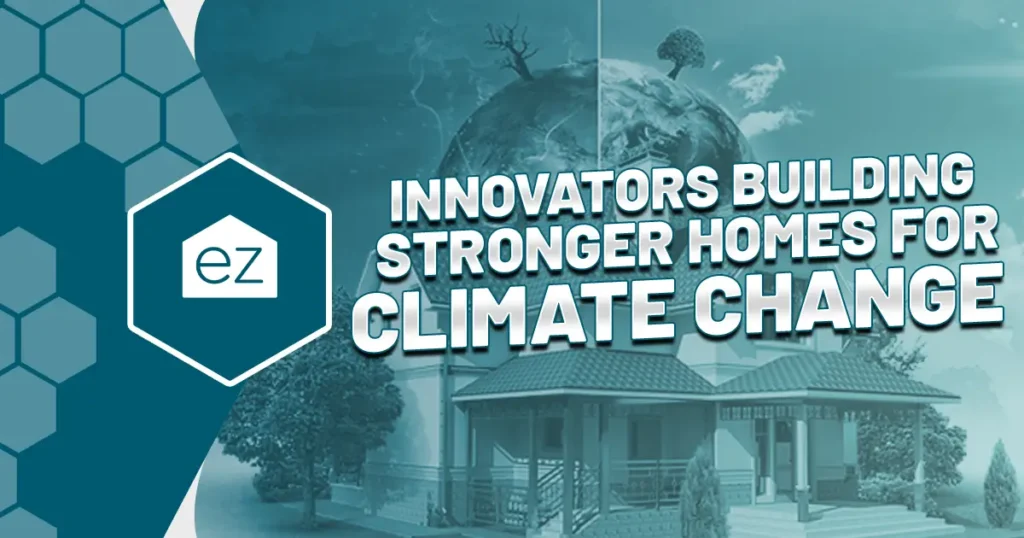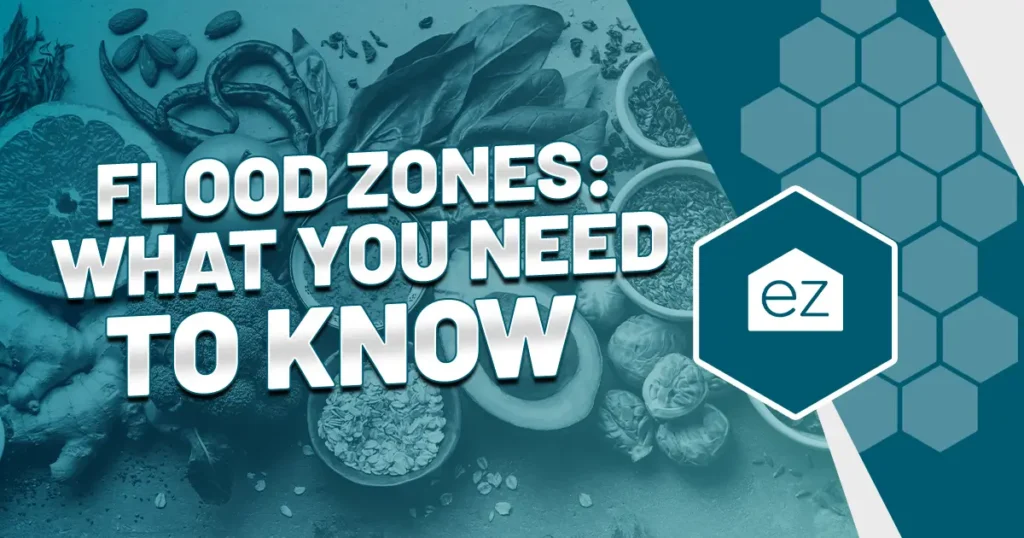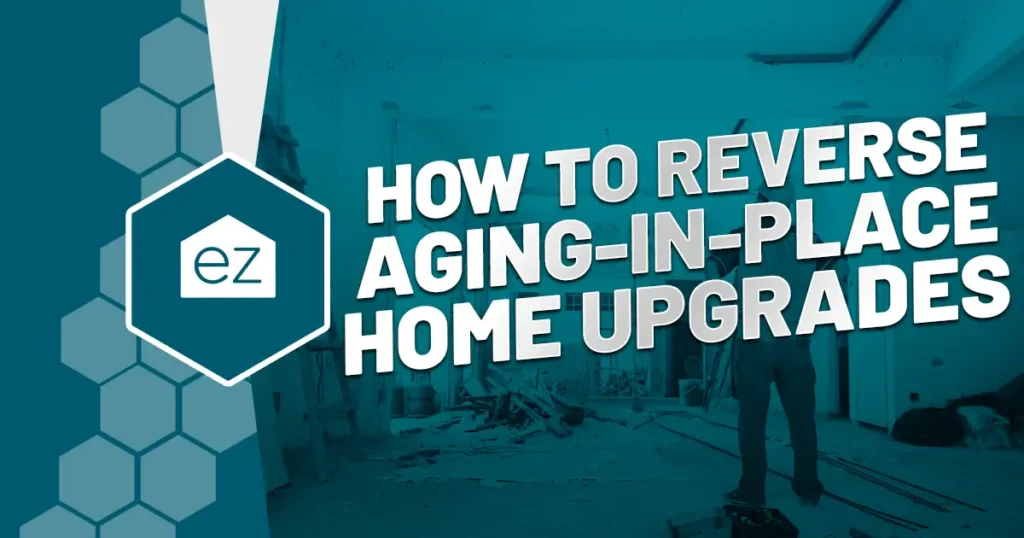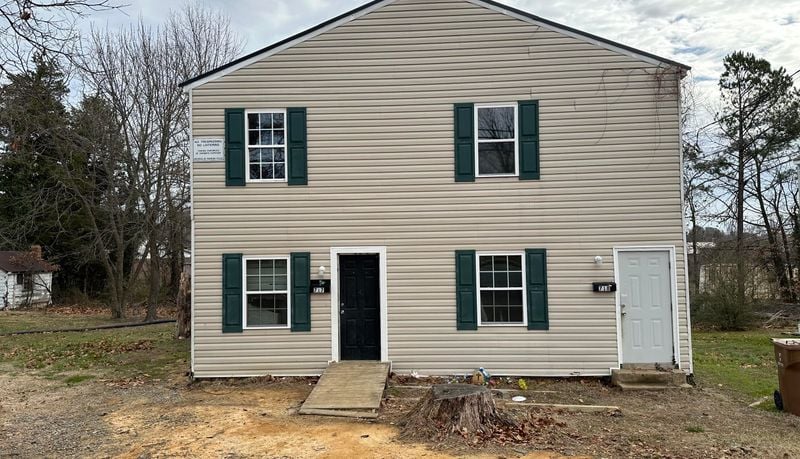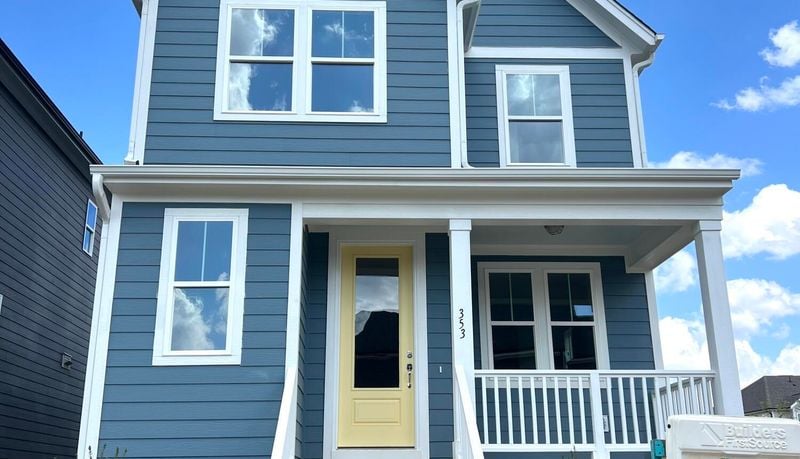Protecting Your Home from the Effects of Climate Change and Coastal Erosion
Coastal erosion is a natural process where the sea washes away land at the shoreline, but climate change is making it worse and causing serious damage. Homeowners in high-risk areas must be aware of how climate change affects their properties. Coastal erosion is accelerating as waters rise, and anyone near a tidal waterfront should be concerned. Lean into learning about the causes and effects of coastal erosion and its impact on homeowners in areas such as Florida. We will also advise choosing a home less likely to be affected by coastal erosion and how to protect your property from structural damage.
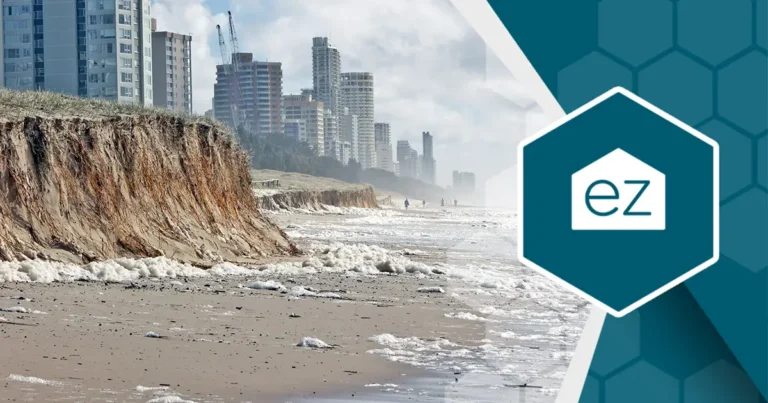
What is Coastal Erosion?
Coastal erosion refers to the gradual coastline erosion caused by the natural processes of waves, tides, and wind. The sea is a powerful force that can cause land loss, flooding, and property damage over time or in a significant storm event.
Warmer temperatures amplifies the natural processes that lead to coastal erosion, posing a serious threat to coastal communities. Rising sea levels caused by the melting of glaciers and polar ice caps result in a higher baseline for waves, increasing the rate of coastal land loss. More frequent and intense storms further exacerbate this process. These storms generate powerful waves that strip away sand and other materials intended to abate land loss. Even concrete barriers can crumble under intense storm surge pounding.
Additionally, the warmer temperatures are causing more intense rainfall and runoff, stronger and more widespread storm events, and more frequent landfalls.
How Coastal Erosion is Impacting Us
Researchers out of the Netherlands studying global coastal erosion found about 16 percent of all beaches are eroding at rates designated “intense” or “extreme.”
This coastal erosion is a significant problem in states such as South Carolina, Georgia, and Florida. Already, these communities have experienced its impacts, as evidenced by the collapse of homes along the Florida East Coast after Hurricane Nicole in 2022 and the shifting of islands on the West Coast due to Hurricane Ian in 2022.
Even though you can compare South Carolina to Florida, all coastlines will be impacted equally. Barrier islands in the southeastern US are averaging coastal recession rates of 25 feet a year. Numerous homes have collapsed into the sea in Rodanthe, part of the Outer Banks in North Carolina, due to rising waters pushing waves closer inland. Loss is expected to worsen with time.
Risks of Living On an Eroding Coastline
Buying a home for its ocean access and view is a dream many who love the water share. Most understand the risks of flooding and storm damage, but little attention has been paid to coastal erosion. But these impacts are significant:
- Land Loss: Coastal erosion can cause significant land loss as it gradually diminishes the shoreline over time. In the US, “coastal erosion is responsible for roughly $500 million per year in coastal property loss.” 1
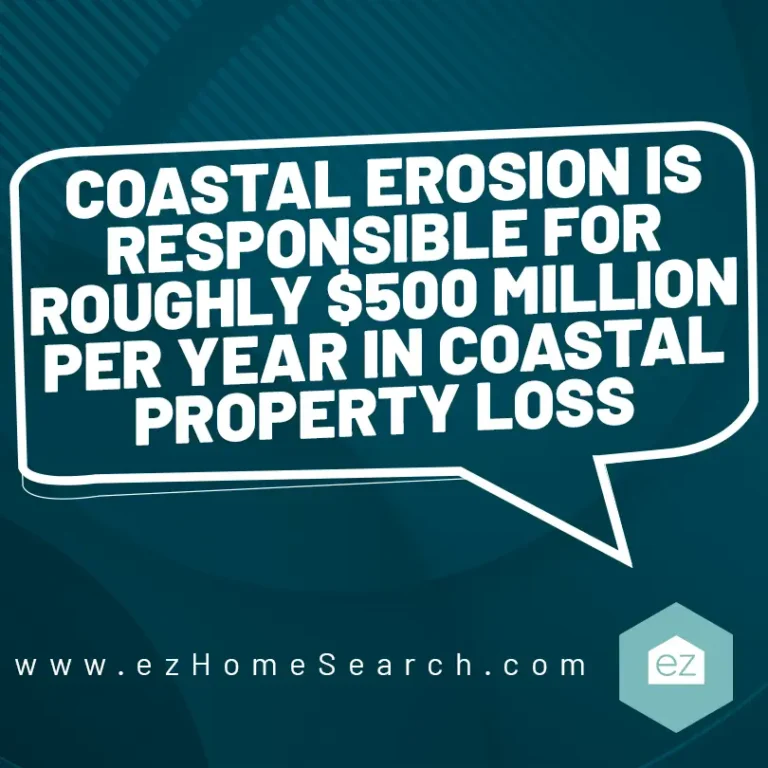
- Damage or Destruction of Homes: High-energy waves and storm surges can lead to structural damage or complete destruction in severe cases.
- Reduced Property Values: The threat of coastal erosion can have a detrimental impact on real estate prices in affected areas, both from land loss and fewer buyers willing to take on the risks of living on the shoreline.
- Increased Insurance Costs: Due to the higher risk of property damage, insurance costs for properties in areas prone to coastal erosion can be significantly higher–if it can be obtained at all.
- Environmental Impact: Coastal erosion can disrupt local ecosystems, potentially affecting nearby wildlife and vegetation and worsening outcomes.
- Loss of Heritage Sites: If erosion affects areas of historical or cultural significance, it may lead to the irreversible loss of heritage sites, as is already being experienced at Jamestown, VA.
Impacts on the Housing Market
This issue brings uncertainty to the real estate industry, as properties at risk of erosion may soon become uninsurable or unmortgageable, causing a significant decrease in their value.
So far, prospective homeowners don’t seem concerned about rising sea levels and waterfront living. A 2022 study on climate change and waterfront housing by Yale and Cornell researchers cited a belief that mitigation efforts will work or the buyers feel the risk outweighs the benefits.
But, as the impact of climate change worsens, that script may change. That’s especially true if the properties are no longer insurable or if the cost of new construction becomes too prohibitive to rebuild.
Furthermore, the risks associated with coastal erosion complicate the growing mortgage concerns related to climate change. Already, some research reveals that smaller lenders are highly aware of the risk of carrying home loans in high-risk flood areas. They’re shedding these mortgages fast.
It’s not unreasonable to project more reluctance from lenders to extend mortgages for properties in erosion-prone areas. These homes are highly likely damaged or destroyed before the mortgage is fully repaid. A Georgia State University study concluded that most homes being transacted in South Florida will not outlast their 30-year mortgage without serious damage or adaptations. And Louisiana is compounded by sinking land and more frequent flooding from rising sea levels, as reflected in new flood maps.

In addition, insurance companies are reassessing their exposure to such high-risk properties, leading to a surge in premium costs. This impact is already very real and measurable in Florida. Insurance premiums here are already among the nation’s highest, and with insurers pulling out in 2023, it’s tipped an already strapped market over the edge. People are selling homes and leaving because they can’t afford their insurance premiums.
Coastal Erosion Mitigation Strategies
As coastal erosion continues to be a growing concern, cities are exploring mitigation strategies to protect coastal properties and ecosystems. Some commonly employed measures:
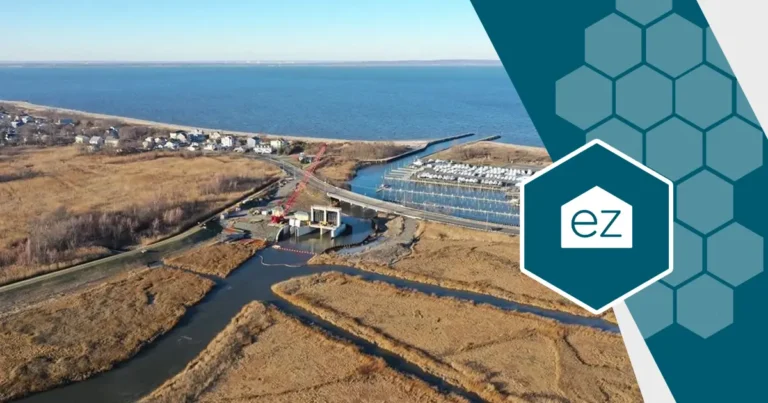
- Seawalls: These barriers constructed parallel to the coast are designed to reduce the direct impact of waves and protect the land from erosion.
- Groins: These structures are built perpendicularly to the shoreline to trap sand moving parallel to the shore, preventing it from being washed away. Property owners can contribute to maintaining existing groins and advocate for constructing new ones where necessary.
- Breakwaters: These structures are built offshore and parallel to the shoreline to reduce the energy of incoming waves, protecting coastlines from erosion.
- Beach Nourishment: This involves adding sand to the beach and replenishing what has been lost to erosion. While it’s expensive and needs frequent reapplication, this method is gaining popularity because it prevents more significant damage from storm surges.
Coastal Erosion Restoration Efforts
Mitigation strategies aim to reduce the rate of coastal erosion, but restoration efforts focus on repairing and rejuvenating eroded coastlines. Among their efforts are:
- Barrier Island Restoration: Barrier islands are natural buffers against coastal erosion and storm surge but are highly vulnerable to erosion. Restoring islands involves recreating their shape, planting vegetation, and controlling the sediment reaching them.
- Living Shorelines: This option is considered a more environmentally friendly approach. Natural habitat elements, such as marsh grass and oysters, are used to stabilize the shoreline.
- Dune Restoration: Sand dunes act as a natural barrier against coastal erosion, but they are fragile. Homeowners can participate in dune restoration efforts by planting vegetation to stabilize the dunes and not walking over them.
- Marsh restoration: Marshes and mangroves play an essential role in coastal ecosystems by absorbing wave energy and stabilizing the shoreline. Restoring marshes reduces coastal erosion while creating habitats for wildlife.
These efforts cannot be successful without community involvement and support.

Preventing Structural Damage
For now, coastal living remains in demand. As a homeowner looking at waterfront homes, reduce your coastal erosion risk.
- Consider the property’s elevation. Buy a home above the water level and not directly on the beach. If the lot is low, an option may be raising the property’s elevation through sand replenishment or soil backfill. This is not permissible everywhere.
- Anchor the home. FEMA recommends driving pilings into more secure layers and not just resting the home on coastal sand.
- Get a survey. Ask an environmental surveyor to assess the site for potential future erosion concerns.
- Install shoreline stabilization. Seawalls, barriers, and vegetation help reduce erosion and protect structures from wave impacts. Always consult with local officials and experts before undertaking any shoreline work.
Homeowner’s Insurance and Coastal Erosion
As Florida homeowners know, acquiring homeowner’s insurance in coastal communities presents growing challenges. Insurance companies rate these regions as high-risk areas, leading to:
- High Insurance Premiums: Insurers may charge higher premiums to offset the damage risk from coastal erosion. This can result in significant financial outlay for homeowners–Florida premiums are already 31% above the national average.
- Coverage Limitations or Exclusions: Most insurance policies exclude coverage for damage related to coastal erosion, citing it as “earth movement” and a gradual process and not a sudden, unpredictable event. Review policy details to understand what is covered and what is not.
- Difficulty in Finding Coverage: Homeowners may find it challenging to obtain any insurance coverage, as more private insurers are unwilling to underwrite policies in high-risk coastal areas.
Given these challenges, homeowners requiring insurance can:
- Shop Around: Explore multiple insurance providers and policies to find the best coverage for your needs and budget.
- Risk Mitigation: Implement measures to reduce the risk of property damage due to coastal erosion. This can include landscaping or installing erosion-prevention structures.
- Government Programs: Where the private market does not provide coverage, the government might. Look into local, state, or federal programs that might offer erosion or disaster insurance coverage. Floridians have Citizens’ Insurance; states like South Carolina have the National Flood Insurance Program (NFIP).
Funding Assistance Options for Easing Coastal Erosion
Local, state, and federal agencies are ready to support community organizations, neighborhood groups, and homeowners with funding for their coastal erosion mitigation efforts. The Coastal Restoration Toolkit has gathered sources of funding grants for coastal erosion projects. The funding eligibility requirements vary widely, so be ready to invest some time in reading and researching.
Relocating Due to Climate Change & Coastal Erosion
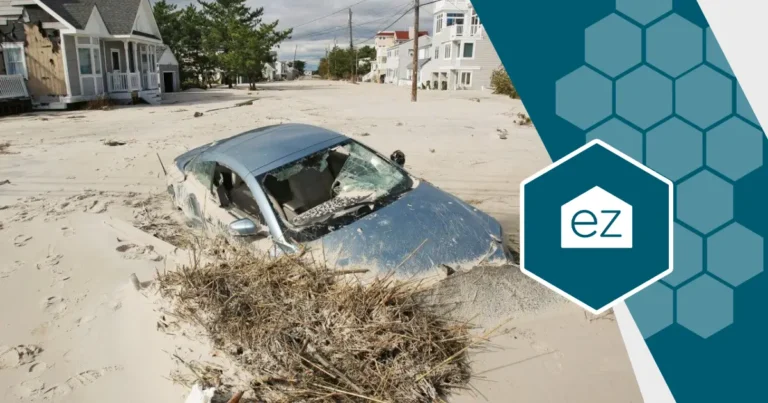
In some extreme instances, relocating from a coastal property may be the most sensible decision. The reasons to move generally include:
- Imminent Danger: The erosion has progressed to a point where the safety of the inhabitants is threatened or if it’s regularly flooded during storm events.
- Lack of Insurance Coverage: Insurance companies refuse to provide coverage due to the substantial risks associated with property damage. The financial burden of rebuilding without insurance can be overwhelming.
- Decreasing Property Value: If the property value depreciates due to the escalating erosion risk, it may be wise to sell and relocate before the property becomes unsellable.
- High Maintenance Costs: Relocation may be a more cost-effective choice if the cost of implementing and maintaining erosion mitigation measures exceeds the property’s value or the owner’s financial capacity.
Relocation is a major decision and should be considered a last resort. Consult with environmental experts, real estate professionals, and financial advisors to make an informed decision.
But relocation from the coast due to the rising sea levels is very real. Already, FEMA and the US government have task forces exploring how to support community-driven relocation. By 2050, over 340 million people living in coastal areas will be displaced worldwide. Management retreat is a very real prospect in the coming decades.
Future Outlook for Climate Change on the Coast
The reality is climate change is causing more frequent and severe coastal erosion. Homeowners in high-risk areas such as Florida must proactively protect their properties.
Risk mitigation strategies like shoreline stabilization measures can help prevent further damage and protect your most significant investment—your home and family.
Helpful Resources
Start Your Home Search
Preston Guyton
Share this Post
Related Articles
Home Safety
How to Make Your Home Safe For Kids
Home Safety
Flood Zones: What You Need to Know
Home Safety
